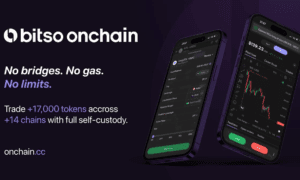Dealerships today face more competition than ever, and standing out requires more than traditional advertising or generic outreach. Consumers are smarter, more digitally connected, and more selective about where they shop. To succeed, dealerships must embrace targeted marketing strategies that reach the right buyers at the right time with the right message. Many dealerships now rely on tools like the automotive dealership marketing platform to streamline their outreach and boost visibility. With the right approach, targeted marketing can significantly increase lead quality, conversions, and overall sales. This article explains how dealerships can boost car sales using focused, data-driven marketing strategies that truly work.
Understand Your Ideal Customer
The first step in targeted marketing is defining your ideal customer. This means identifying buyer profiles based on demographics, interests, behavior, and location. Understanding who is most likely to visit your dealership helps you tailor your ads and messages effectively.
For example, a dealership promoting compact hybrids may focus on eco-conscious commuters, while a truck dealership may target homeowners, contractors, or outdoor enthusiasts. When you know exactly who you’re marketing to, every campaign becomes more impactful and cost-efficient.
Use Data to Segment Your Audience
Audience segmentation is essential for delivering the right message to the right person. Instead of communicating with everyone in the same way, dealerships should segment prospects into meaningful groups based on:
- Vehicle preferences
- Budget range
- Buying stage (researching, browsing, ready to buy)
- Previous website or ad interactions
- Service history
Segmentation makes your messaging more personalized and relevant, increasing the likelihood that potential buyers will respond. It also ensures your marketing budget is used efficiently by focusing on high-quality leads.
Leverage Social Media Advertising
Social media platforms like Facebook, Instagram, and TikTok offer powerful tools for targeted dealership marketing. These platforms allow you to reach potential buyers based on detailed demographic and behavioral profiles.
Some effective social media strategies include:
- Carousel ads showcasing multiple vehicles
- Short video ads demonstrating features
- Retargeting ads for people who visited your website
- Lead form ads that collect contact information instantly
Social media provides dealerships with massive reach and precision, making it one of the most effective channels for driving sales.
Implement Retargeting Campaigns
Most shoppers won’t buy a car on their first visit to your website. Retargeting allows you to reach those visitors again by showing tailored ads as they browse other sites or platforms.
Retargeting keeps your dealership top-of-mind and gently pushes buyers closer to making a decision. For instance, if someone viewed used SUVs on your website, you can retarget them later with ads featuring discounts or new arrivals in your SUV inventory.
Improve Local Search Visibility
Because car shoppers often search for dealerships near them, local SEO is one of the most powerful tools for increasing sales. Optimizing your dealership for local search ensures that your business appears in Google results when buyers look for:
- “Dealerships near me”
- “Used cars for sale in [city]”
- “Best SUV deals near me”
To improve local search visibility, dealerships should:
- Optimize Google Business Profile listings
- Collect customer reviews regularly
- Improve website SEO
- Use location-based keywords in content
Strong local search presence helps ensure that your dealership appears in front of motivated, nearby customers ready to purchase.
Utilize Email Marketing for Nurturing Leads
Email remains one of the most effective channels for nurturing potential buyers. When used correctly, email marketing helps you maintain communication with leads who aren’t ready to purchase yet but will be in the near future.
Effective email campaigns may include:
- New model announcements
- Service reminders
- Seasonal promotions
- Personalized follow-ups based on browsing behavior
By keeping customers engaged over time, email marketing increases the chances of turning warm leads into confirmed sales.
Offer Personalized Deals and Promotions
Buyers appreciate when dealerships provide offers tailored specifically to their needs. Personalized promotions feel more relevant and increase urgency.
Examples include:
- Discounts based on vehicle type previously viewed
- Loyalty rewards for returning customers
- Financing offers tailored to buyer credit tiers
- Incentives for customers near the end of a lease
Personalization boosts conversions because it speaks directly to what the customer cares about.
Enhance Website Experience for Better Conversions
A dealership’s website is often the first point of contact for potential buyers. A well-designed, mobile-friendly website helps convert casual browsers into leads. Key features include:
- Fast loading speed
- High-quality photos and videos
- Clear CTAs (e.g., “Schedule a Test Drive,” “Check Availability”)
- Easy-to-use finance tools
- Chat support for instant help
A great website reassures shoppers, answers their questions, and moves them closer to visiting the dealership in person.
Incorporate Video Marketing
Video content significantly boosts engagement and helps dealerships stand out. Shoppers love visual storytelling because it simplifies the decision-making process.
Dealerships can create videos featuring:
- Vehicle walkarounds
- Feature demonstrations
- Customer testimonials
- Explainer videos on financing
- Special promotions
Video builds trust and provides a personal touch that text and images alone cannot achieve.
Use Geo-Targeted Advertising
Geo-targeting allows dealerships to reach buyers in specific cities, neighborhoods, or regions. This ensures that your ads are shown only to people within your actual market area.
For example, a dealership may target ads within 20 miles of its location or focus on regions with higher interest in certain vehicle types. Geo-targeting reduces waste in ad spend while increasing conversions among local shoppers.
Strengthen Customer Relationships Through Follow-Up
After a customer visits your dealership, effective follow-up communication can make or break the sale. Many buyers visit multiple dealerships before making a final decision, so timely follow-ups help keep your dealership top-of-mind.
Useful follow-up options include:
- Thank-you emails
- Price quotes
- Inventory updates
- Personalized incentives
When customers feel valued and supported, they’re more likely to return and complete their purchase.
Track Performance and Adjust Strategy
Successful targeted marketing requires ongoing monitoring and adjustment. Dealerships should track key metrics such as:
- Website traffic
- Ad interactions
- Lead conversions
- Phone call volume
- Test drive appointments
- Sales closed from digital campaigns
Analyzing results helps identify what’s working and where improvements are needed, allowing dealerships to continuously refine their approach.
Conclusion
Boosting car sales with targeted dealership marketing is all about reaching the right customers with highly relevant messages. By leveraging digital tools, segmenting audiences, creating personalized offers, retargeting website visitors, and improving online experiences, dealerships can attract more qualified buyers and convert them into loyal customers. Targeted marketing not only helps increase immediate sales but also strengthens long-term customer relationships—giving dealerships a competitive advantage in an evolving digital landscape. With consistent effort and smart strategies, any dealership can elevate its marketing and see measurable growth in sales.





























